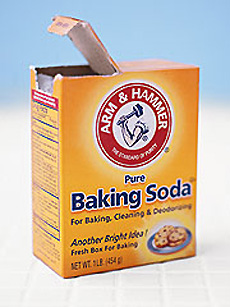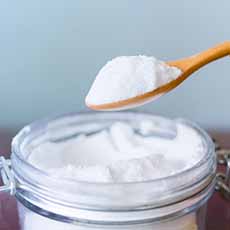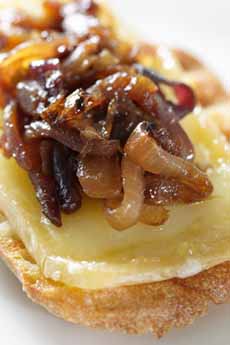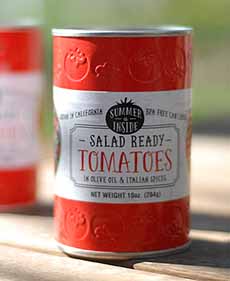Uses For Baking Soda In The Kitchen & Cooking
|
|
We primarily use baking soda as a kitchen cleaner. We often have two boxes in the fridge, and one in the freezer, to absorb food odors. Secondarily, we use it in our cookies* and cakes. And it was a lifesaver when we burned popcorn in the microwave, and scorched a pot or two. We bought several boxes to get us through those two disasters. But since baking soda has a shelf life—it will become less effective 6 months* after the package is opened—we looked for more ways to use it. In the kitchen alone, baking soda is a great cleaning agent for: You also can using baking soda to: Tackle heartburn. If you’ve eaten too much and have heartburn, baking soda can help by neutralizing stomach acid. Just dissolve a teaspoon of baking soda in a glass of cold water, and drink it slowly. Clean produce. Recent research has found that soaking non-porous fruits and veggies in a baking soda wash is the most effective way to remove pesticides without peeling them. This means produce like apples, bell peppers and citrus, and not skins that are easily penetrated, like berries and carrots [source]. If you want to try it, swirl the produce in a solution of 2 teaspoons baking soda per 1 quart water for 30 seconds. The produce should be submerged in at least 1 inch of water. Then rinse under cold running water [source]. Beyond the kitchen. Here are more ways to clean and freshen other rooms in your home. Here are a few of them. December 30th is National Bicarbonate of Soda Day. Baking soda is one of the most widely used leaveners in baked goods, and is also an natural cleaning and deodorizing agent. The simple chemical compound is known as sodium bicarbonate. It’s found in crystalline form in nature, but is ground to a fine powder for consumer use. Baking soda is an alkaline substance (the pH is >7) is a leavening agent that reacts with acidic elements in a batter to form carbon dioxide (CO2). The CO2 forms microscopic bubbles, which then “escape” through the batter, causes the rise in: *Baking soda is good long after its “best by date,” although it can lose potency over time. A package opened for six months may not provide as much leavening action. While “old” baking soda it is still safe to eat, it is better to use it up in situations where you’re not looking for leavening (cooking as opposed to baking, e.g.). Of course, it’s still good for cleaning. To test if the baking soda is still potent, place some in a bowl and add a spoonful of vinegar or lemon juice. If the mixture fizzes heavily, the baking soda is still good. If there’s not much fizz, it is no longer potent [source]. |
|
|
|
||








